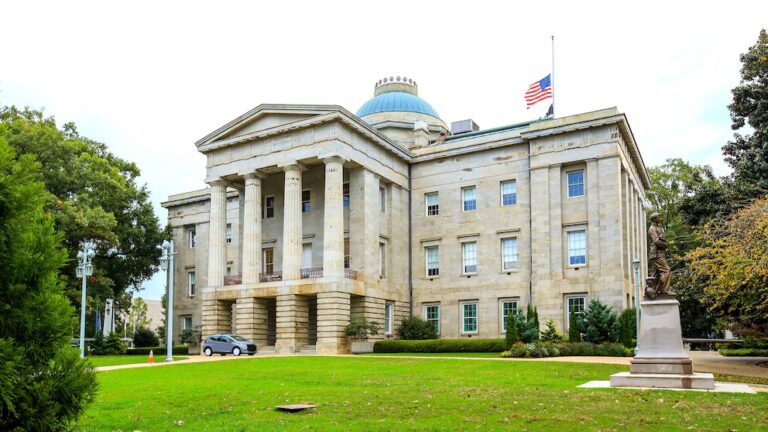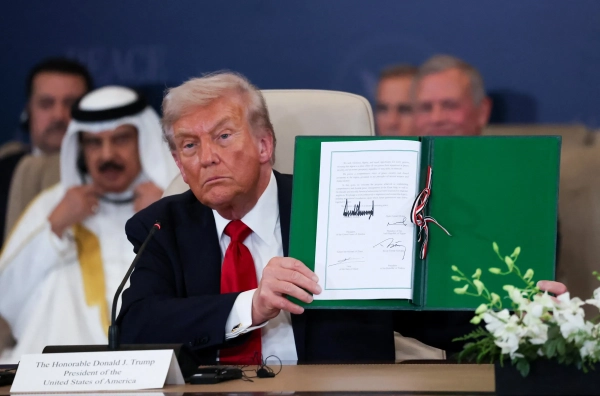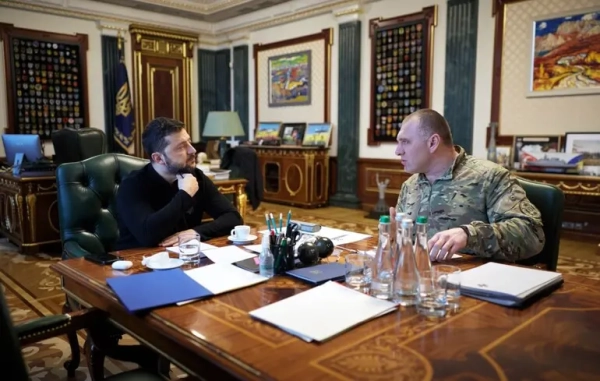It has that new car smell: fresh leather chairs, brand new wood paneling, stonework … all the signs of a full gut renovation.
But now the $50 million, one-year project (that included digging 5 feet below the surface of the White House grounds) is done and the makeover of the famed Situation Room, considered the single most secure part of the federal government and the scene of history-making decisions by presidents through the years, is complete.
And ABC News got to go inside along with a select group of other reporters for rare, behind-the-scenes access.
The door into the facility is unmarked door and bland, still right next to the cafeteria in the cramped and comparatively dated West Wing.
But once you walk through, it does, in fact, look like the movies. And it is very cold, to keep all the secure technology safe.
Newly renovated, it is not a room at all but a 5,500-square-foot operations center with two conference rooms, the main room, breakout modules and the "watch floor."
No phones are allowed and no smart watches, either. ABC News' tour was pen-and-pad only. As of this week, the new Situation Room complex is operational. President Joe Biden has already held a meeting there.
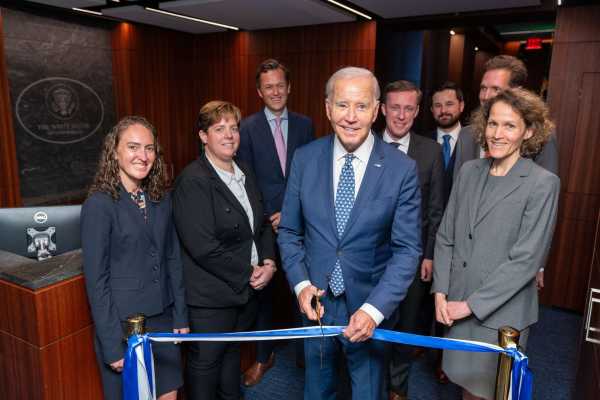
President Joe Biden attends a ribbon cutting for the renovated White House Situation Room, on Sept. 5, 2023, in the West Wing of the White House.Adam Schultz/White House
Compared to the old space, documented by White House photographers, the look is much more austere and modern. It features dark, floor-to-ceiling wood paneling along with track lighting, spotlights, speakers in the ceiling overhead, cameras everywhere and monitors, some with classified and unclassified distinctions. (The coloring changes from green to red.)
In terms of aesthetic, think NASA command meets Jason Bourne meets Aaron Sorkin’s "The West Wing."
The facility director, Marc Gustafson, who chaired the renovation, said that everyone's first reaction is that it looks even more "Hollywood" than before.
The main meeting room has been designated the "Kennedy" room (with a plaque on the wall), a nod to President John F. Kennedy who is credited with creating the first Situation Room after the Bay of Pigs fiasco. Kennedy's team said there was a need to get better real-time information from the intelligence community.
In the new space, there is a big wood table (sustainably sourced from Virginia) with 12 chairs around it, plus the seat at the head under a seal and in front of two flags: for America and another for the executive branch.
We were told everything, from the wood to the carpet, was picked with security and acoustics in mind.
There are rows of built-in speakers on the ceiling and digital clocks on the walls that are set based on the info that is needed — but that also always show the time zone that the president is in.
The seal behind the desk rotates depending on who is leading the meeting: the president, vice president, the White House national security adviser and so on. Reporters saw the closet of seals.
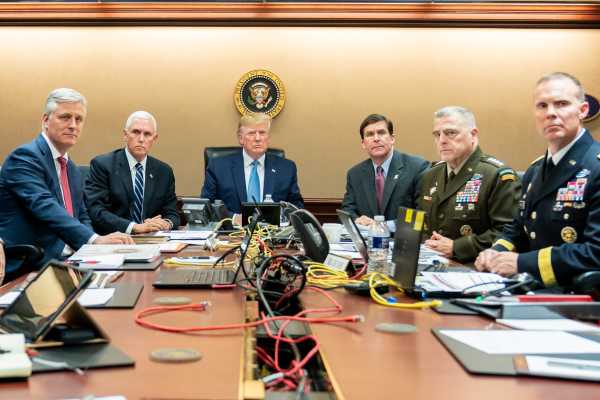
President Donald Trump is joined in the Situation Room of the White House by Vice President Mike Pence, National Security Advisor Robert O’Brien, Secretary of Defense Mark Esper, Chairman of the Joint Chiefs of Staff U.S. Army General Mark A. Milley and Brig. Gen. Marcus Evans, Deputy Director for Special Operations on the Joint Staff as they monitor a mission to kill ISIS leader Abu Bakr al-Baghdadi, Oct. 26, 2019 in Washington.Shealah Craighead/The White House via Getty Images
There are more chairs around the periphery of the room and all of the monitors. On one huge wall are eight screens and then three screens are on each side wall of the room. Classified feeds from any agency and around the world can be plugged in, secure calls with foreign leaders can be set up — and a lot more that officials wouldn't share.
In fact, one of the major reasons for the renovations, which the White House is very upfront about, was the need to keep up with changing technology and enhance security. The last remodel was back in 2007. For the last year, administration officials have instead used secure rooms elsewhere in the West Wing or the nearby Eisenhower Executive Office Building.
In the last few years, the government has struggled with increasing cybersecurity threats. In July, officials said that State Department had been breached by Chinese hackers.
The famous photo of then-President Barack Obama, then-Secretary of State Hillary Clinton and others watching the Osama bin Laden raid in 2011 was actually not taken in the main area of the Situation Room but in an adjacent conference room where they could get a better feed from the military. This remodel changes the capabilities of the main room to fix that.
(The old conference room was preserved, walls and all, and shipped to Obama's presidential library.)
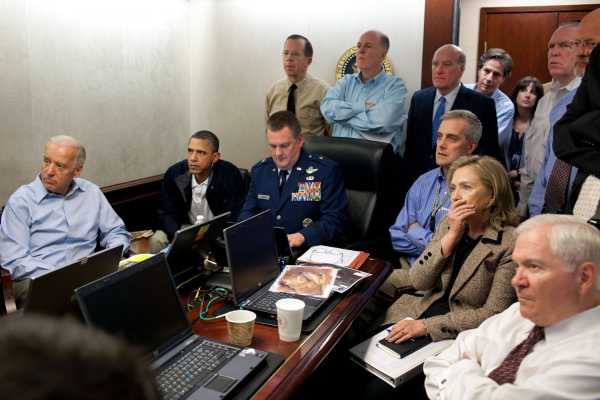
President Barack Obama, Vice President Joe Biden, Secretary of State Hillary Clinton and members of the national security team receive an update on the mission against Osama bin Laden in the Situation Room of the White House May 1, 2011 in Washington.The White House/Getty Images
ABC News was told the president first saw the new space on Tuesday night and thought it was "fantastic."
The president and Vice President Kamala Harris still have their own door to the compound while everyone else, from the secretary of state to the chair of Joint Chiefs of Staff and beyond, must enter through the main reception area: a row of desks with wood paneling and grey stonework. Gustafson said that officials tried to keep "a marriage" of new and old traditions in the space.
The VIP door has a separate camera to alert staff when the president or vice president are coming. Biden has come in before on a whim, unannounced, ABC News was told.
About the "watch floor": One wing of the space is a big room with walls of monitors and 17 work stations, all with several individual monitors, too. On-duty officers, who are mostly detailed to the White House from the Pentagon or departments of State and Homeland Security, sit at these desks in 12-hours shifts and monitor, take in and distribute classified intelligence. It's the backbone of the facility.
The officers sift through material and coordinate with the agencies to prep for meetings, secure calls, arrange the presentations and wake up White House principles as needed in the middle of the night. They are on watch 24/7.
Sourse: abcnews.go.com
